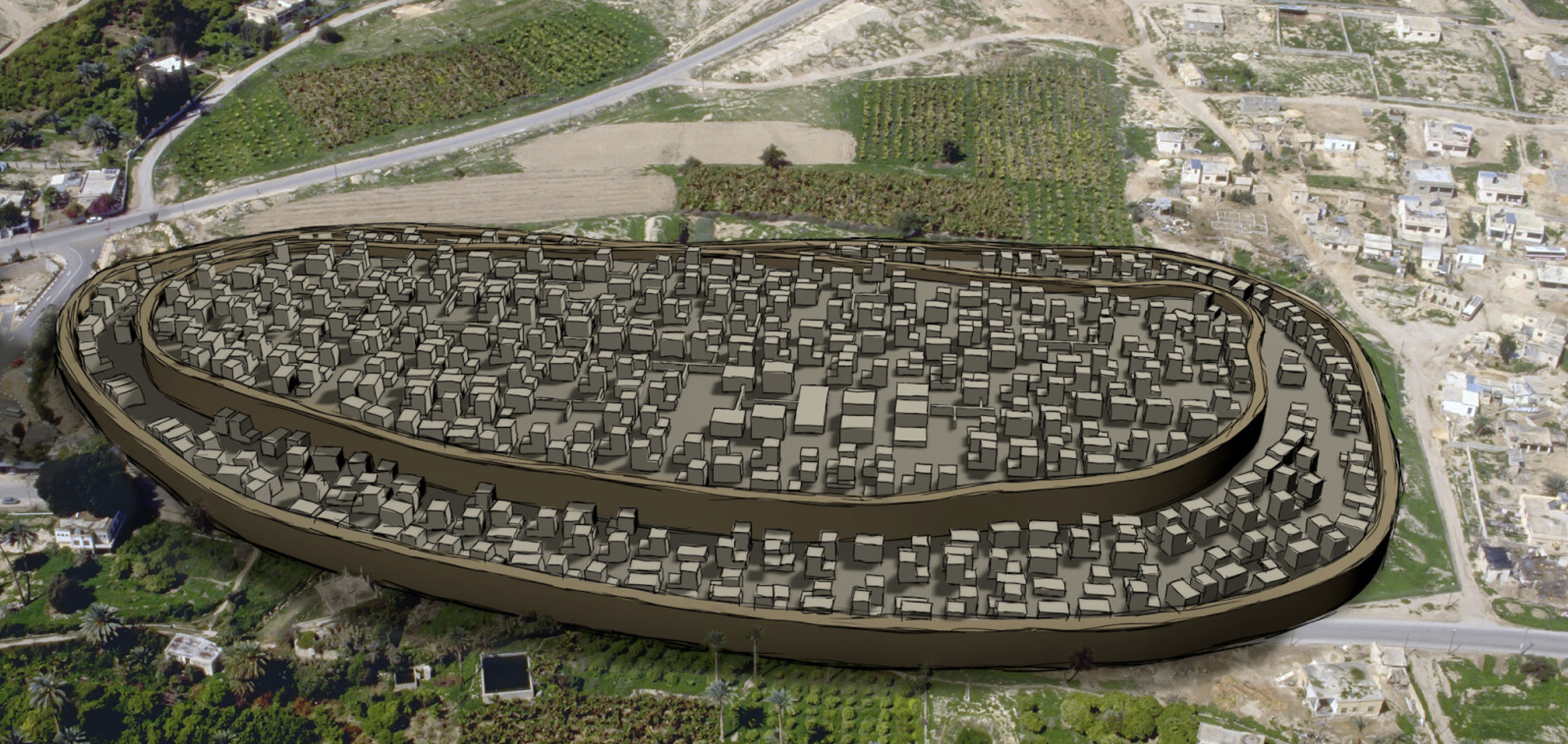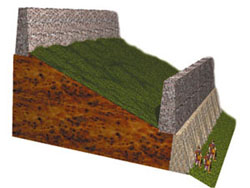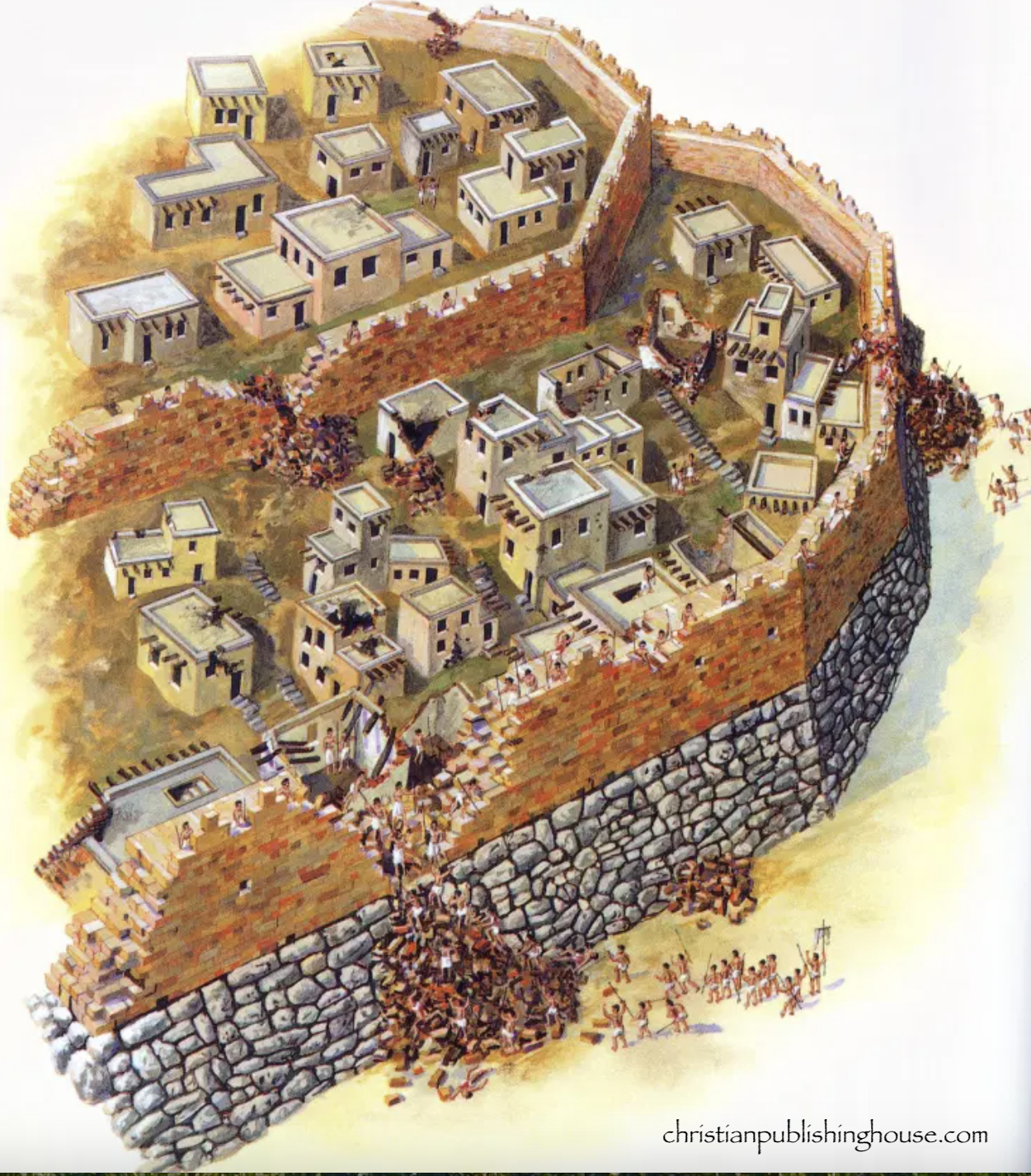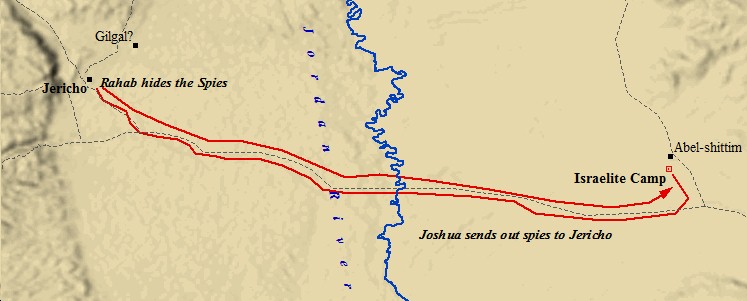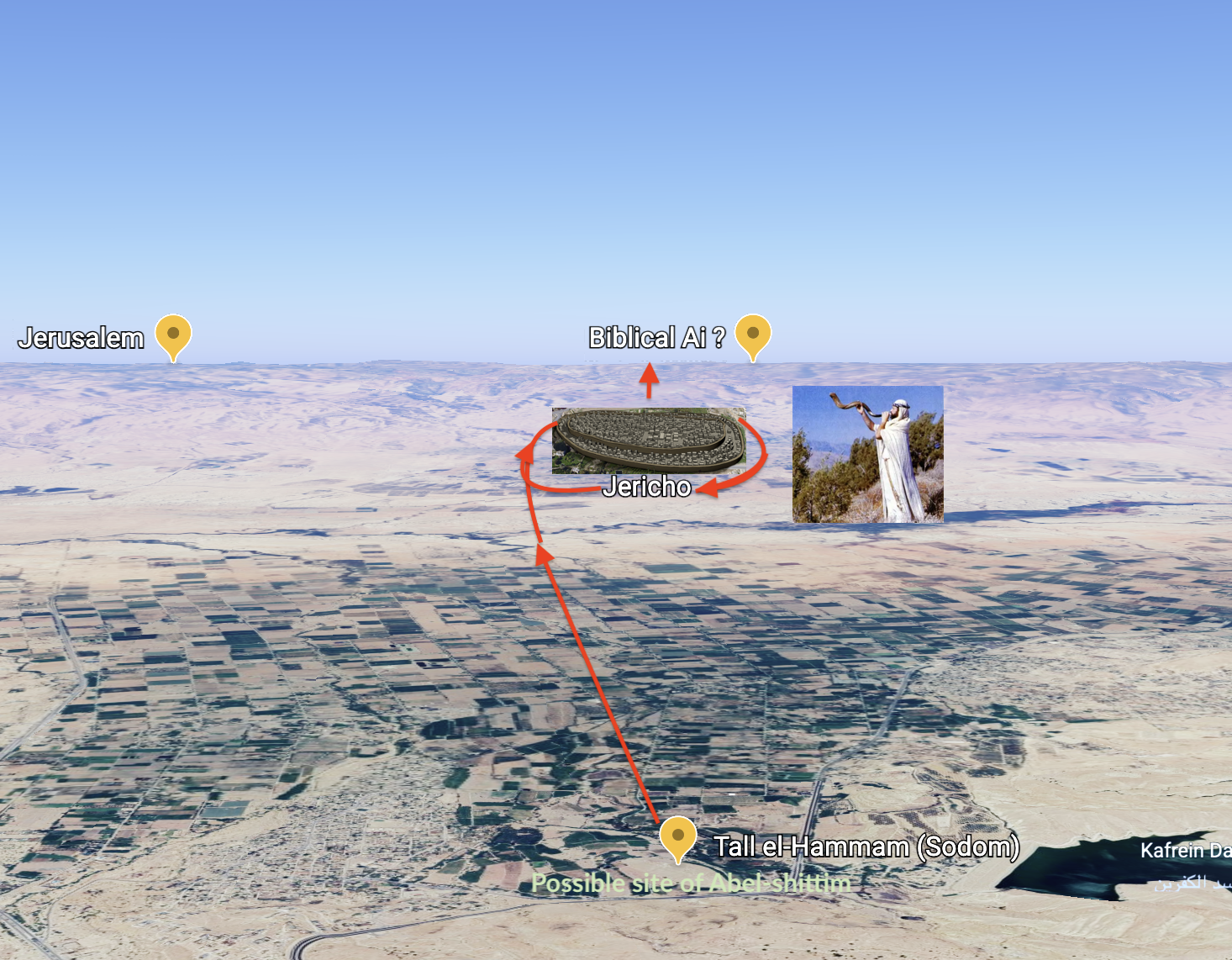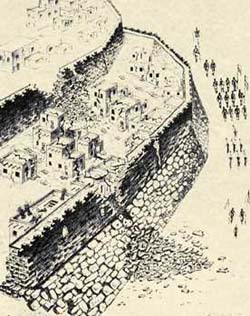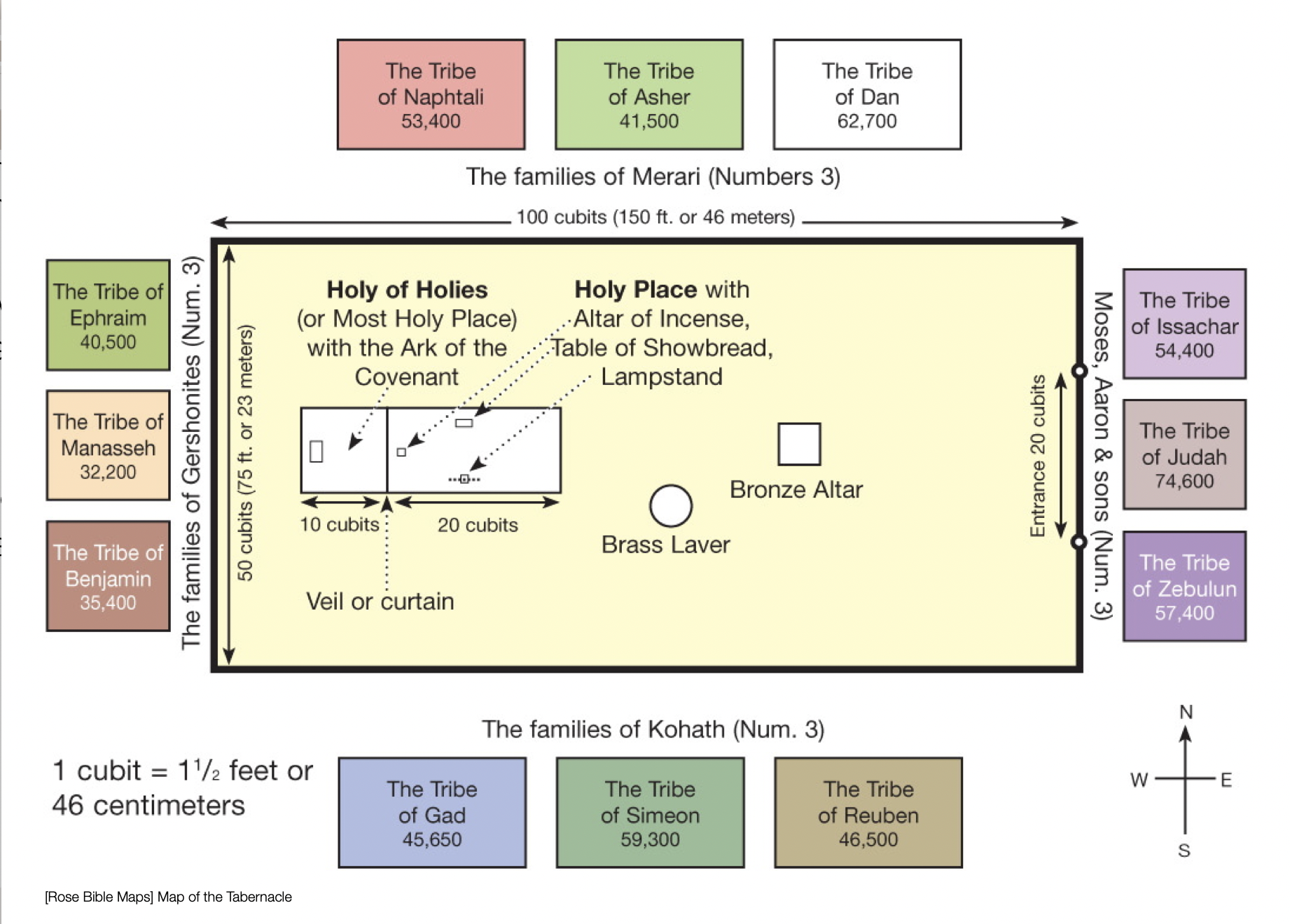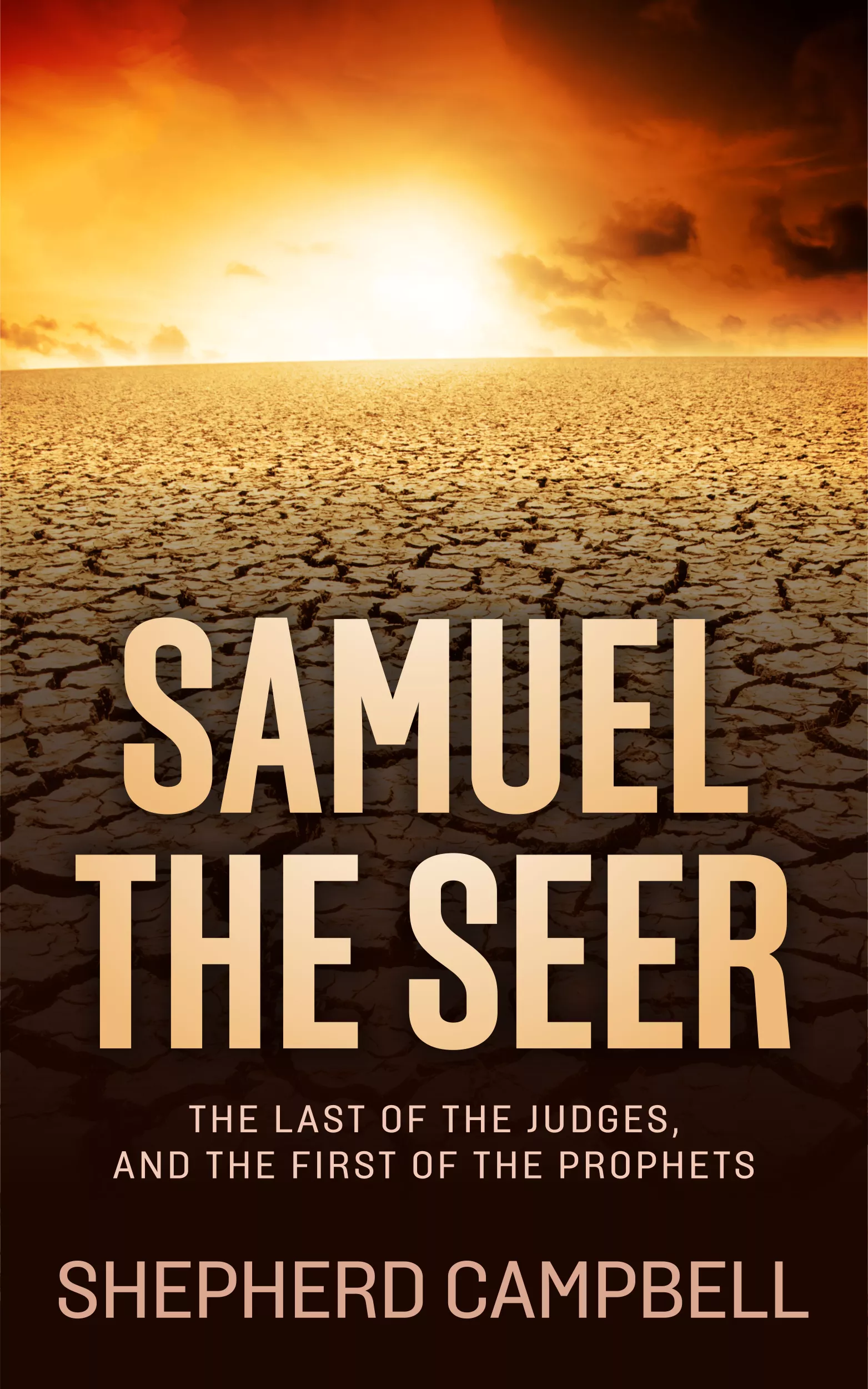VISIT OUR FACEBOOK PAGE!
The Walls of Jericho
The walls of Jericho loomed large over the ragtag Israelite camp below. The city appeared ready for the looming battle of Jericho. From inside the city walls the people must have surely watched as the Israelites crossed the Jordan and set up camp within eye sight.
However, it is doubtful that the people of Jericho really feared for their lives. The fortifications of Jericho were massive. When one hears of the ancient city of Jericho, the first thing that comes to mind are the walls of Jericho. They were massive and impenetrable. And the Israelites had no siege weapons of any kind to penetrate the walls.
These walls were structured on a three tiered plan. The walls started with an earthen rampart, or embankment, which ran from ground level upwards on an incline to a stone retaining wall - the second tier. The stone retaining wall stood 12 to 15 feet in height (4-5m) on top of the earthen embankment, as the digital image below depicts.
On top of the stone retaining wall, stood another wall made of mud-bricks, 6 feet (2m) thick, and 20 to 26 feet (6-8m) high. Together these two walls combined to form a fortification 32 to 41 feet high.
To put this into perspective, envision a 4 story tall building. Such was the height of the walls of Jericho. On the other side of the double wall, the embankment continued to climb upwards. The third tier was at the very top of the embankment, where yet another mud-brick wall stood.
At their base, the walls of Jericho stood 46 feet (14m) above ground level outside the retaining wall. To the Israelites below, Jericho seemed impenetrable.
The illusion created by the two walls on the bottom, and the large wall at the crest of the embankment, seemed to stand nearly 10 stories in height from ground level! From this height, the Israelites must have seemed like ants and were certainly not considered a threat - especially with no siege
The fact that God instructed Joshua and the Israelites to walk around the city would suggest that the walls of Jericho were not that wide in diameter. In fact, the upper city, contained within the top walls of Jericho, was only 6 acres. However, the area of the Upper City, combined with the fortification system, was about 9 - 10 acres total. It is very plausible that the Israelites could march around the city several times in one day.
The population of Jericho within the Upper City was likely around 1,200 people. However, people were living in the space between the walls of Jericho, on the embankment, and houses were built as part of the wall itself, as seen in the picture below.
When archaeologists' discovered this fact, the Bible was once again verified unintentionally by science. Rahab immediately comes to mind. The book of Joshua relates how her house was built into the walls of Jericho. The spies escaped out of her window, sliding down the walls of the city. She then hung a "cord of scarlet thread" out of her window.
The scarlet thread would have been plainly visible if her house were indeed built into the walls. Though often it may seem the Bible provides confusing details, this one story proves remarkably accurate! People in the surrounding villages would have also fled to Jericho for protection and safety from the marauding Israelites. Consequently, Jericho's population would have swelled to several thousand.
Jericho was well prepared for a siege. The harvest had just been gathered (Josh. 3:15) so there was an ample food supply.
The Ein Al-Sultan spring was located within the walls of Jericho. This spring alone provided more than enough water for the entire population. Strategically, Jericho was a well fortified and well supplied city with little fear of being overrun by the wandering band of Israelites. Jericho was an impregnable fortress with plenty of resources and supplies within the city walls, and a supply of fresh water immune to sabotoge.
Joshua, however, was not deterred. The city of Jericho loomed like a mountain in the distance. The Israelites had been on the move and had a tremendous amount of momentum after the miraculous river crossing.
Joshua had been affirmed by God in front of the people. The local villages had been abandoned, and the "The City of Palms" had been locked up airtight. The Israelites were poised to strike.
God had other plans. He instructs Joshua to make flint knives and circumcise the men of Israel (Joshua 5:2-9). In a similar fashion, Israel had been circumcised as they left Egypt.
However, circumcision had been neglected as the Israelites wandered the desert. This must have seemed like a strange time for God to command this. It would have left the Israelites vulnerable to attack for at least a few days as the men recovered from the procedure. Yet, this was a sign of man's commitment to God, and part of God's covenant with Abraham , it was vitally important that Israel be sanctified before going into battle and entering a new phase of their existence as a nation.
Without hesitation or argument, Joshua obeyed and the nation of Israel was circumcised on the banks of the Jordan River. God had tested them, and their obedience led God to "roll away the reproach of Egypt" (5:9), a consequence of the previous generation's disobedience in the desert.
The place became known as, "Gibeath-haaraloth", or, "the hill of foreskins". God's people were now in full compliance with His decrees. After their circumcision, the Israelites celebrated the Passover (5:10-12).
The Bible tells us on the fourteenth day of the month they celebrated the Passover. Their celebration must have seemed eerily strange from on top the towering walls of Jericho. On the fifteenth day, they ate ate from the land of Canaan. On the sixteenth day, for the first time in forty years, the manna did not appear.
God had cut off the provision of manna, for now they ate "of the produce of the land of Canaan". As God had delivered them out of the land of Egypt, He was now going to deliver them into the land of Canaan.
The Walls of Jericho
Joshua 5:13-15 records an interesting encounter.
"Now, when Joshua was near Jericho, he looked up and saw a man standing in front of him with a drawn sword in his hand.Joshua went up to him and asked, 'Are you for us, or for our enemies?' 'Neither,' he replied, 'but as commander of the army of the Lord I have now come.' Then Joshua fell face down to the ground in reverence and asked him, 'What message does my Lord have for his servant?' The commander of the Lord's army replied, 'Take off your sandals, for the place where you are standing is holy.' And Joshua did so."
The Bible doesn't say what Joshua was doing. We are told he was "near Jericho" and nothing more. Perhaps he had finished walking through camp, checking on the people and supplies.
Maybe he had been scouting the land around Jericho, looking for any potential ambush sites. More than likely, Joshua had been in prayer with the Lord.
The appearance of this visitor was sudden. Apparently Joshua did not recognize the man's uniform, only that he had a drawn sword in his hand. It is interesting that Joshua's reaction was not one of alarm, but rather curiosity. He asked him which side was he for. The soldier answered, "Neither..". He was the commander of the army of the Lord, perhaps suggestive of the archangel Michael.
Jude 9 mentions that the archangel Michael had disputed with the devil himself over the body of Moses. Michael is also associated with Christ's second coming in 1 Thess. 4:16. It is also Michael who battles the fallen Watchers in the book of Enoch , again per God's divine instructions.
Leading the Israelites into the Promised Land would certainly fit a mission Michael would be assigned. Michael's sole concern are his orders from God. The battle of Jericho is not man's fight, but God's.
The Lord then commanded Joshua as to how to structure the invasion. The "armed guard" (6:9) was to march first in line. They were followed by seven priests carrying "trumpets of rams' horns" (6:4). These trumpets were blown continuously throughout the march around the walls of Jericho.
The priests responsible for the ark of the covenant followed behind, with the "rear guard" (6:9) behind them.
Scripture is not exactly clear as to the rest of the procession, but it is common belief the rest of the Israelites fell in behind the rear guard. Joshua was very precise in his instructions to the Israelites, as God had been very precise with His instructions to Joshua.
The people were to march in this fashion once a day, for six days, with the trumpets blowing.
Yet, Joshua instructed the people; "Do not give a war cry, do not raise your voices, do not say a word until the day I tell you to shout. Then shout!"
Scripture records that on the seventh day, the Israelites:
"got up at daybreak, and marched around the city seven times in the same manner, except that on that day they circled the city seven times." (6:15)
Once again Joshua had been very clear in his instructions. After the seventh time they marched around the walls of Jericho, and after the trumpet blasted, Joshua would give the order and the people were to shout. Upon hearing their voices, God would topple the walls of Jericho and give the city to His people as a sign of their obedience.
Joshua issued orders that nothing was to be touched, or taken, except the things that had been devoted to the Lord. All people, men, women and children, young and old, were to be killed. The silver, gold, bronze, and iron were to go into the Lord's treasury. The devastation was to be complete. Only Rahab, and all who were under her roof, were to be spared.
On the seventh day, after the seventh time around the walls of Jericho, Joshua gave the command, and the Israelites gave a shout. The Bible says, "the wall fell down flat". The Hebrew suggests that the city walls of Jericho fell beneath themselves. In fact, excavations have shown that the bricks from the collapsed walls of Jericho formed a ramp against the retaining wall.
The Israelites simply "went up into the city, every man before himself" (6:20).
They then "utterly destroyed everything in the city", as they had been instructed. The only persons spared were Rahab, and those that had been with her in her house.
Joshua cast a curse on Jericho in the waning verses of chapter 6. This curse concluded the Biblical account of Jericho's role in the conquest of the Promised Land.
Though the most famous role of Jericho in the Bible, the ancient walls of Jericho remained through the reign of David.
The ancient city rests less than two miles from modern day Jericho.
CLICK TO SHARE YOUR THOUGHTS ON JERICHO
How tall were the walls of Jericho? Are the unearthed walls of Jericho the ones mentioned in the Bible? Click on the link above to give us your insight, thoughts, comments, and questions!
Back to Walls of Jericho
Back to Jericho
Back to Home Page
Recent Articles
-
The Tabernacle
Feb 27, 25 04:47 PM
The Tabernacle was where Yahweh met with his people before the First Temple was built. It was also called the Tent of Meeting. -
The Tabernacle of Moses
Feb 19, 25 09:50 AM
The tabernacle of Moses was built by Moses, per instruction from God, during the Exodus out of Egypt. It represented God's presence amongst His people. -
The Ark of the Covenant
Feb 19, 25 09:46 AM
The Ark of the Covenant is one of the most mystifying objects in all of human history. It's power was so great that Israel often carried it to the front lines.
SAMUEL the SEER
Now Available in Print & eBook on Amazon!!
POPULAR TOPICS
Learn more about these popular topics below. The Bible is full of fascinating stories, characters and mysteries!
BIBLE MAPS
Explore the land of the Old Testament! View these maps of the Bible.
